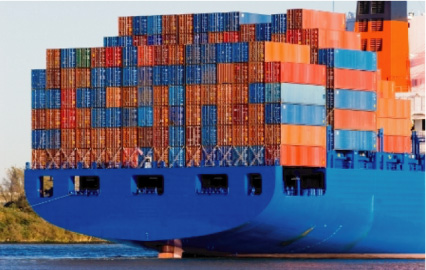Aage Krogh, IUNO Denmark
A carrier was held liable for damages to goods caused by lifting and humidity, when the goods were being stored and transported within the port area previously to shipping. The carrier and the consignor did not have an established agreement regarding the responsibility of the cargo, while it was stored in the port. The Norwegian court (Borgating lagmannsret) placed great emphasis on the fact that the carrier was the professional part in maritime transport.
A consignor had planned a transportation of a modular apartment from Bærum County to Sogndal County in Norway. The consignor had hired two men to handle the transportation: One road haulier in head of transportation by land and one shipper in head of transportation by sea from the port of Drammen to the port of Leikanger. As part of the agreement, the road haulier was responsible for handling the transportation by land from the port of Leikanger to the final destination in Sogndal County.
The consignor was responsible for the preparation of the modular apartment to ensure that the goods were able to manage the transportation by land and sea without any damages.
The modules arrived on time in the port of Drammen and were placed in the port area, where they were held for a total of nine days. After this, they were loaded on a ship for transportation to the port of Leikanger. It was not specifically agreed which part was liable for the modules while they were being held in the port area.
As a comment on the consignment note, the captain of the ship noted that one of the modules had been damaged during the lifting in the port area of Drammen. Furthermore, the captain noted that some openings and holes in the modules had not been shielded from water.
When the modules arrived at the port of Leikanger it was discovered that they were damaged due to the lifting (that took place in the port of Drammen) and they had also suffered water damage. Thus, the receiver decided to take legal action against the shipper in order to cover the costs of reparation. The shipper opposed to this and argued that he was not liable for the damages. The Norwegian District Court ruled in favor of the shipper.
Borgating Lagmannsrett: The shipper was responsible for the damages
According to the Borgating Court of Appeal it was a doubtful matter whether or not the goods were in the custody of the consignor or the shipper in the nine days they were placed in the port area of Drammen. Since there was no existing agreement on this matter, the court produced a list of criteria regarding custody relations that were useful to assess the situation. The court then applied this list in order to determine which of the criteria spoke in favor or against and whether or not the goods were in the custody of the shipper.
- Against the shipper’s custody: The shipper did not have his own area or his own employees in the port.
- In favor of the shipper’s custody: When agreeing to the transportation, the shipper had suggested to use an area in Drammen port and approached the port himself regarding this matter. Furthermore, the shipper had paid for the storage of the goods. The consignor and the shipper had not agreed on any deadline regarding the shipping of the goods. For that reason, the shipper was liable to determine the length of the storage period in the port area. Finally, the court argued that the shipper was the professional part in the agreement regarding the maritime transportation.
The court then ruled that the goods “without a doubt” were in the custody of the shipper whilst they were being stored in the port of Drammen. The reason for the ruling was that the consignor should have been informed by the shipper on the fact that the storage was at the risk of the consignor.
Thus, the shipper was responsible for the damages caused either when the goods were lifted around in the port area or when it was carried onboard the ship. The shipper was responsible regardless of the fact that it was the employees of the port who were lifting the goods and causing the damages.
The shipper was responsible for water damage
The consignor was responsible for the preparation of the modular apartments to ensure that the goods were able to manage the transportation by land and sea. The shipper in turn was responsible for the water damage.
The court did not lower the costs of the claim which did not please the shipper since the shipper had chosen to lift the goods on board the ship regardless of what he had seen – and noted down on the consignment note – i.e. that the goods were not properly covered. The court argued that the shipper should have made an attempt to reduce the risk of damages. Furthermore, the court argued that the shipper should have contacted the consignor to inform him that the packaging was not sufficient for the particular kind of transportation.
The shipper was forced to compensate the costs of reparation for water damage. However, the court ruled that the shipper should not pay for the consignor’s legal costs since the conclusion regarding custody was a doubtful matter.
Thus, the Borgating Court of Appeal changed the decision of the District Court.
IUNO’s opinion
The judgment illustrates which criteria should be assessed when an agreement is non-existing and when it is to be determined which of the contracting parties has the goods in their custody.
For more information on custody issues, please refer to our previous newsletter regarding the case of the trailer that was parked in front of the freight forwarder’s terminal.
Lastly, the judgment from the Borgating Court of Appeal also illustrates that the fact that one of the contracting parties is a professional has an impact on the decision. Thus, in this case where the shipper was a professional within maritime transport, he should have pointed out that the goods were in the custody of the consignor. The court did not attach importance to the fact that the consignor was a professional party to the agreement.
Ref: Norwegian Borgating High Court’s judgement of 27 April 2015, case no. LB-2015-21437

